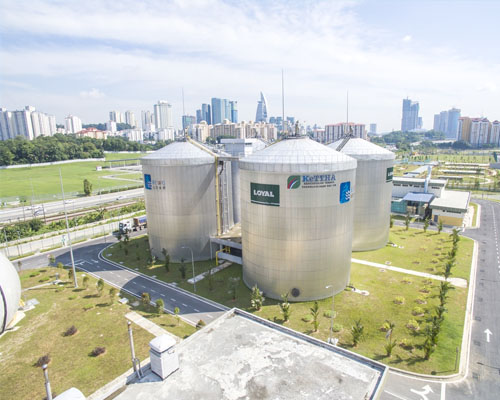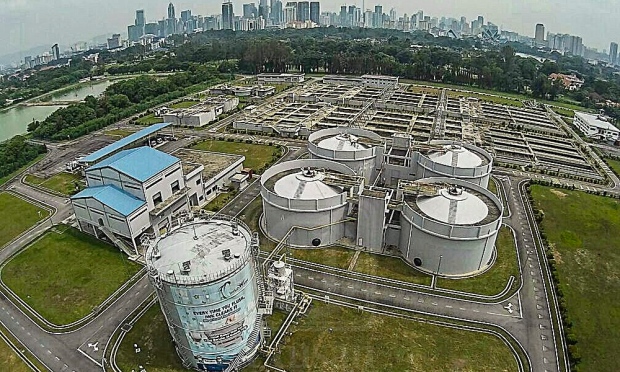Many international researchers have begun to study whether sewage in the sewerage system could be the "early warning" for the COVID-19 pandemic virus back in the community.
Malaysia itself through the Ministry of Environment and Water has taken a proactive approach to conducting a study on the risk of COVID-19 if it can spread through the method.
Minister of Environment and Water, Datuk Ibrahim Ibrahim Man, explained recently that the study needed to be done immediately following a report from the National Institute of Public Health and the Environment (RVIM) in the Netherlands showing the genetic material of the corona virus causing COVID-19 found in the sewage system in the Netherlands.
STUDY AS A STUDY
To date, there is still little known about the "severe acute respiratory syndrome coronavirus 2" (SARS-CoV-2) virus that causes the COVID-19 outbreak. This has led many experts to study various aspects including the potential exposure of this virus to sewage.
Prof. Madya Dr. Nazlina, SME.
Senior Lecturer in Faculty of Science and Technology, National University of Malaysia (UKM), Prof. Madya Dr. Nazlina Ibrahim told Bernama that a study conducted by the Ministry of Environment and Water through the National Institute of Hydraulic Research Malaysia (NAHRIM) in collaboration with Universiti Teknologi Malaysia, could serve as a guideline for COVID-19 infection especially in asymptomatic or non-symptomatic cases,
According to him, the most important part of the study conducted by the Ministry of Environment and Water should be to look at the microbial content of sewage to determine if a residential area might have COVID-19 but not filtered.
“NAHRIM, a government agency that specializes in hydrological research, can assist in the sampling of sewage to monitor the presence of COVID-19 disease virus, especially in high-risk areas.
"This will help the Ministry of Health (MOH) identify the location of the virus to screen for the people in the area," he said. The ribonucleic acid (RNA) of SARS-CoV-2 virus can be detected in the presence of impurities.
In this way, he said, he would be able to support the Ministry of Health Malaysia's data to determine which patients were positive or negative.
NO OTHER PEOPLE
Prof. Madya Dr. Nazlina Ibrahim, who specializes in microbes and viruses, said the virus in sewage would not infect others because sewage contains substances from impurities or other microbes that would damage the external samples of the virus.
There are even RNAs that break down the genetic material of the virus, he said.
“In sewage also there are no cells that can infect the virus. Therefore, there is no chance that the COVID-19 virus will remain intact to allow it to infect others.
"That is why I recommend that the government through the Ministry of Environment and Water focus on sewage treatment to monitor the presence of COVID-19 instead of conducting studies to study the presence of genetic material in the sewage," he said.
Meanwhile, the Water Enviroment Federation (WEF) in a statement stated that there is no scientific evidence for the viability of the virus causing COVID-19 disease in the sewage system.
Dr Mohd Yusoff Ishak, Senior Lecturer in Faculty of Forestry and Environment Universiti Putra Malaysia (UPM)
This was also agreed by Universiti Putra Malaysia (UPM) Senior Lecturer in Forestry and Environment, Dr Mohd Yusoff Ishak
According to Dr Mohd Yusoff, the study of sewage in the Netherlands was more than enough to see the extent of the spread of COVID-19 in the community.
This is based on a small number of COVID-19 patients with the coronary virus in the digestive tract that will be excreted as impurities.
"The findings of the study are still in the early stages as the researchers still need to identify the RNA's identity in the sewage and then estimate the number of people infected in the community based on the concentration of the RNA," he said, adding that the technique still needs to be tested for validation by more laboratories. and researchers before the findings of the study are adopted.
According to him, there are still many questions about the findings of the Dutch study including the differences in climate in Malaysia that can decompose micro-organisms faster and the capacity of the treatment plant at the study site.
"This study may be useful in mapping the spread of coronavirus areas, but researchers need to look at the method and location of the sewage sludge to truly represent the population being studied and not the study at a glance," he said.
Not an urgent need
Mohd Yusoff explained that a study conducted by the Ministry of Environment and Water was not an urgent need.
According to him, it would be best to do so when the outbreak began to diminish to avoid competition with the laboratory analysis requirements of the existing sample.
At that time, focus should be on studies that can produce the right results for the shortest time to increase the maximum number of sampling possible.
In addition, there is an urgent need to conduct tests to detect asymptomatic individuals who are infected but do not show any symptoms or symptoms of infection and potentially spread the virus, he said.
"The enforcement of the CPP followed by the screening of at-risk groups, side by side and then treating them to prevent infection to others is the best way to break the infection transmission chain and to address the outbreak," he said.
THE IMPORTANCE OF DIVISION SYSTEMS
Indah Water Consortium (IWK) Sdn Bhd is conducting a study on bacteria through a telescope in the 'Pilot Unit Section' at the IWK Research Center.
It is important to understand that sewage piping systems are indeed intermediates to many types of microorganisms and may have potential as mediators to viruses.
Mohd Yusoff explained that obsolete and poorly maintained sewage systems, especially in strata-type homes, can cause various types of microorganisms to spread in the environment in the event of a leak.
For example, the World Health Organization (WHO) report on the outbreak of Severe Acute Respiratory Syndrome (SARS) in a housing block in Hong Kong in 2003 identified defects in the sewage system as a cause of the spread of the virus in the building.
In addition, the risk of transmission of microorganisms including viruses increases when the level of hygiene is not given proper attention while sanitary conditions are imperfect.
He added that the treatment plant system and sewerage pipeline network in the country are among the most modern in the region.
The Kuala Lumpur Coastal Sewage Treatment Plant 2 for example is the largest sewage plant in the Asia Pacific region with a capacity of 1.423 million people.
The use of the latest technology enables sewage treatment to be better treated and produce more environmentally friendly effluents through the removal of pollutants such as nitrogen and phosphorus as per developed country standards.
"As such, it can be said to be safe and not a viral spread agent," he said.
Author By Kurniawati Kamarudin
Edited by Melati Mohd Ariff
BERNAMA
Date of Input: 28/04/2020 | Updated: 28/04/2020 | wannoorshidah
MEDIA SHARING

















.jpg)








.png)




